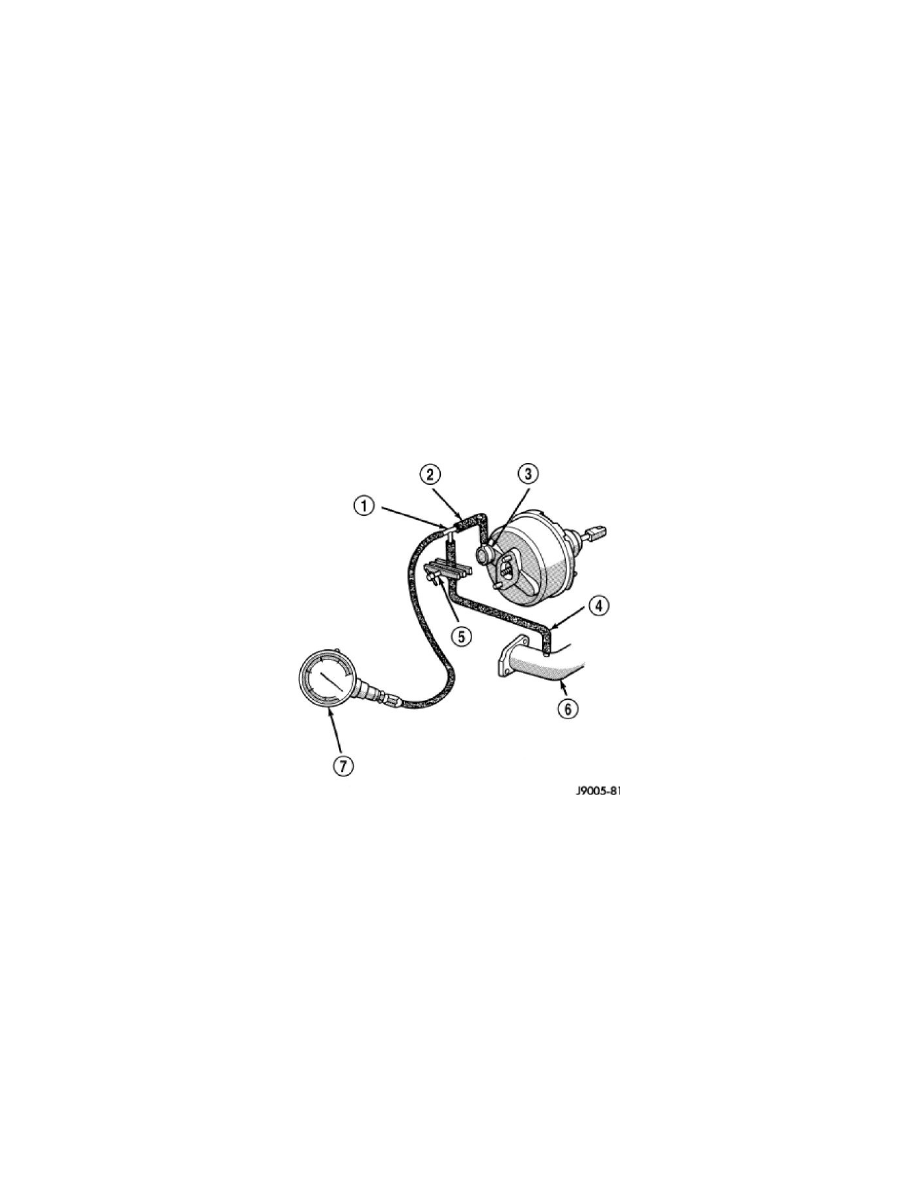Nitro 2WD V6-4.0L (2007)

Vacuum Brake Booster: Testing and Inspection
MASTER CYLINDER/POWER BOOSTER
1. Start engine and check booster vacuum hose connections. A hissing noise indicates vacuum leak. Correct any vacuum leak before proceeding, also
ensure booster mounting nuts are torqued correctly.
2. Stop engine and shift transmission into Neutral.
3. Pump brake pedal until all vacuum reserve in booster is depleted.
4. Press and hold brake pedal under light foot pressure. The pedal should hold firm, if the pedal falls away master cylinder is faulty (internal
leakage). This could also indicate an external leak, such as at fittings, hoses, HCU, etc, or a symptom of an internal leak in the HCU
5. Start engine and note pedal action. It should fall away slightly under light foot pressure then hold firm. If no pedal action is discernible, power
booster, vacuum supply, or vacuum check valve is faulty. Proceed to the POWER BOOSTER VACUUM TEST.
6. If the POWER BOOSTER VACUUM TEST passes, rebuild booster vacuum reserve as follows: Release brake pedal. Increase engine speed to
1500 rpm, close the throttle and immediately turn off ignition to stop engine.
7. Wait a minimum of 90 seconds and try brake action again. Booster should provide two or more vacuum assisted pedal applications. If vacuum
assist is not provided, booster is faulty.
POWER BOOSTER VACUUM TEST
1. Connect vacuum gauge to booster check valve with short length of hose and T-fitting.
2. Start and run engine at curb idle speed for one minute.
3. Observe the vacuum supply. If vacuum supply is not adequate, repair vacuum supply.
4. Clamp hose shut between vacuum source and check valve.
5. Stop engine and observe vacuum gauge.
6. If vacuum drops more than one inch Hg (33 millibars) within 15 seconds, booster diaphragm or check valve is faulty.
POWER BOOSTER CHECK VALVE TEST
1. Disconnect vacuum hose from check valve.
2. Remove check valve and valve seal from booster.
3. Use a hand operated vacuum pump for test.
4. Apply 15-20 inches vacuum at large end of check valve.
5. Vacuum should hold steady. If gauge on pump indicates vacuum loss, check valve is faulty and should be replaced.
